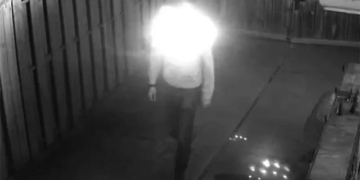To control the environmental pollution activities caused by railway transport, the Vietnam Railway Corporation has recently focused on analyzing the causes and proposing solutions to mitigate environmental pollution factors. They are concerned with and directing units to gradually improve environmental protection efforts…
1. Implementation of Environmental Assessment Standards in Railway Activities
To protect the railway environment, it is crucial to control the pollutants, and thus, find ways to remedy the situation. The Vietnam Railway Corporation is currently implementing several standards, including:
+ Noise and emission standards applied in locomotive and carriage design…
+ Maximum noise limits for public and residential areas: TCVN5949-1995.
+ Environmental sanitation standards according to Decision 505 of the Ministry of Health.
+ Permissible noise levels in workplace areas.
+ Limit values for basic air parameters: TCVN 5937-1995
+ Permissible limits for organic substances in the air: TCVN 5940-1995.
+ Air pollution standards at production sites (Temporary standards by the Ministry of Science and Technology). In the upcoming period, the Corporation will continue to refine environmental standards for locomotives, carriages, infrastructure, and workplace environments, while also researching advanced environmental standards for gradual implementation.
2. Noise Reduction Measures:
To minimize noise both inside and outside the train, the Vietnam Railway Corporation has been studying and applying key measures such as:
– Maintaining and enhancing the quality of wheel treads and rail surfaces, which significantly affect the noise level generated by trains. Defects in wheel treads, such as flat spots (due to wheel slippage during braking), chipping (loss of part of the wheel tread due to mechanical brittleness), rail surface defects, and rail joints are all major causes of noise in railway transport. Grinding the wheel tread or rail can reduce noise by 10 to 15 dBA.
– Researching the use of sound barriers: The use of sound barriers is an effective measure to control noise along the train’s route. Barriers made from both concrete and metal, as well as absorptive and non-absorptive fences, can reduce noise by up to 8 dBA.
– Utilizing special wheels: The use of special wheels has a significant impact on reducing noise for trains, specifically elastic wheels that can absorb shocks. Shock-absorbing wheels are primarily used to prevent screeching noise between wheels and rails, reduce ground vibration, and decrease noise levels.
– Improving infrastructure: For infrastructure, especially regarding tracks, the railway sector has applied new scientific technologies to research solutions for welding rails together to minimize noise from the impact between train wheels and rails. In practice, trains running on welded tracks produce 3 to 6 dBA less noise compared to non-welded tracks. Additionally, operations to enhance the stability of the track bed and free up railway corridors significantly reduce the noise intensity of trains affecting the surrounding environment.
– Enhancing the technical condition of vehicles: Strengthening the maintenance of old locomotives, acquiring new locomotives, and using lightweight, soundproof materials for carriage construction. Research has shown that soundproof materials used in Vietnam can reduce noise by approximately 16 dBA.
– Increasing maintenance efforts, particularly for engines, and replacing old diesel locomotives.
– Managing fuel quality.
– Organizing rational transportation.
– Regarding infrastructure, it is advisable to implement projects that reduce small-radius curves and slopes to decrease fuel consumption.
– Utilizing clean fuels and investing in electrification for traction.
– Managing domestic waste and solid waste: Currently, Vietnam Railways has successfully tested and implemented Microphor technology, which utilizes bacteria to convert domestic waste into liquid, which is then neutralized with chlorine. This system is currently installed on push-pull trains and some carriages in the Unified train service.
– Incorporating environmental sanitation education and training for environmental management officials into the mandatory curriculum of vocational schools.
– Training environmental management officials and specialized scientists in environmental fields. Establishing an environmental management system within the railway sector: Developing regulations for a management unit and a system from the Vietnam Railway Union to each facility to oversee environmental matters, based on establishing environmental standards for the Vietnam Railway.
– Building a legal framework based on research to issue environmental protection policies, amending and supplementing them to suit the Vietnam Railway. Establishing emission standards for locomotives, generators on carriages, and fuel quality management processes according to TCVN, especially for diesel locomotives…




















































